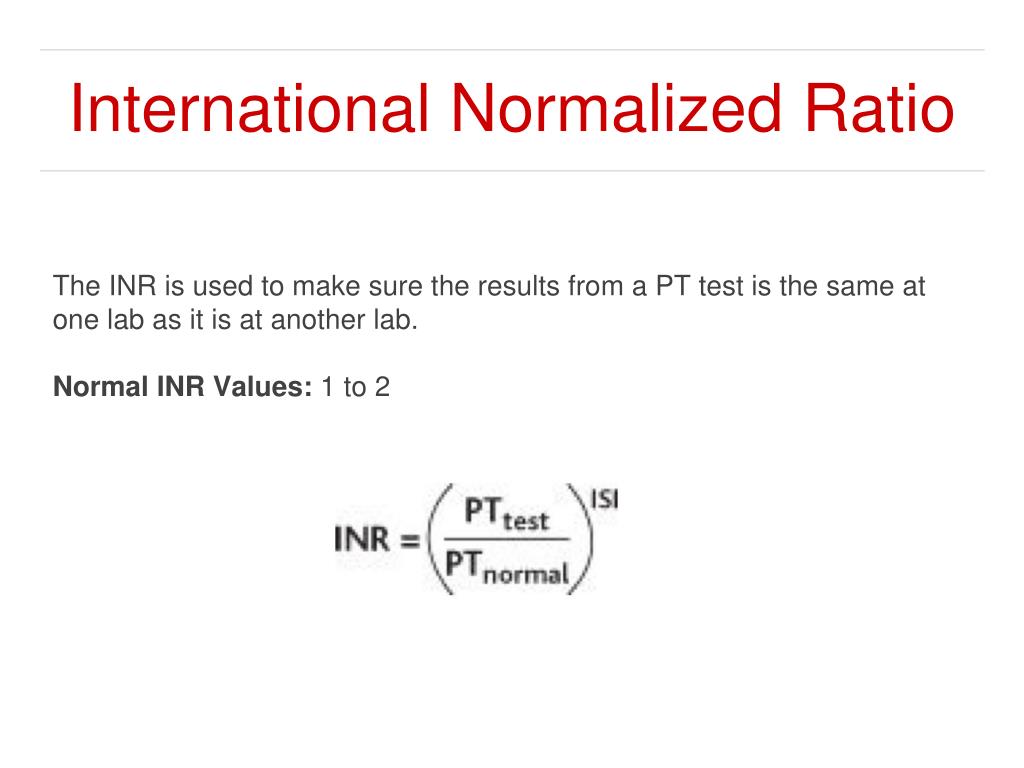

12-16 Use of an international sensitivity index (ISI) specific for rivaroxaban reduced interassay variability, whereas conversion to an INR used for monitoring vitamin K antagonist (VKA) therapy increased variability and demonstrated reduced rivaroxaban responsiveness.

10-13 There was significant variability with respect to assay sensitivity depending on the thromboplastin reagent used. However, in patients receiving rivaroxaban, the effect on PT was modest and variable, with lower concentrations approximating trough levels (41-60 ng/mL) and higher concentrations approximating peak levels (219-305 ng/mL), which increased the PT by 6%–19% and 50%–135%, respectively. In plasma from patients receiving rivaroxaban and plasma spiked with rivaroxaban there was a linear, concentration-dependent prolongation of the PT. What is a normal PT/INR range Your test result will show different ranges for PT and INRs The normal ranges for clotting are: 11 to 13.5 seconds INR of 0.8 to 1.1 INR of 2. The INR is the PT ratio that would result if the WHO reference thromboplastin. The INR is a calculation based on results of a PT test and is used to monitor individuals who are being treated with the anticoagulation medication warfarin. Correlation coefficients appeared lower in ex vivo patient samples (0.47-0.66) compared with spiked normal human plasma (0.99-1.00). A PT is expressed in seconds and/or as an international normalized ratio (INR). Only 6 studies reported a correlation coefficient ( R 2) to describe the relationship between rivaroxaban levels and the PT, which varied from 0.47 to 1.00 ( Table 1).
PT/INR and APTT results together are used in diagnosing various hematologic disorders.The effect of rivaroxaban on the PT was evaluated in 14 studies. Use of aspirin versus warfarin for the first 3 months post-op after aortic bioprosthesis implantation is a matter of clinical judgment. When your PT or INR is too high, you have an increased risk of. Blood is drawn in a vial having tri-sodium citrate anticoagulant that is the choice of anticoagulation of coagulation profile tests. Recommended Therapeutic Range and Duration of Warfarin Therapy Aspirin 80-100 mg/day If add aspirin 80-100 mg/d to warfarin anticoagulation If normal left atrial size and patient in sinus rhythm. An elevated PT or INR means your blood is taking longer to clot than is considered healthy. A blood coagulometer is an analyzer/ instrument used to assay the coagulation efficiency of blood so as to diagnose and assess bleeding disorders like hemophilia or to monitor patients who are taking anticoagulant medicines e.g. A PT test is referred to as an INR Test, where INR stands for International Normalised Ratio and is a method of standardizing the results of the Prothrombin. The doctor needs a PT/INR test report before the surgery that helps make sure blood is clotting normally, so the patient won’t lose too much blood during the procedure. The common symptoms of a clotting disorder are leg pain or tenderness, leg swelling, trouble breathing, redness or red streaks on the legs, chest pain, cough, and rapid heartbeat. The common symptoms of a bleeding disorder are unexplained heavy bleeding, bruising easily, sudden heavy nose bleeds, and unusually heavy menstrual period. Did you know that an individual whose blood clots normally and who is not on anticoagulation should have an INR of approximately 1 The higher the INR level. A PT/INR test is often tested along with a partial thromboplastin time (PTT) test which also checks for clotting problems. Coumadin is a common brand name for warfarin. Routine bloodwork conducted in the emergency department shows prothrombin time, international normalized ratio, and activated partial thromboplastin time within the normal range, and estimated glomerular filtration rate of 50 mL/min/1.73 m 2 (normal is >90 mL/min/1. Check clotting function prior to surgery. As the nurse you want to know their normal ranges, what each test assesses, how the tests are used to monitor anticoagulation therapy, and the nurse’s role. aPTT test for exams The PT/INR and aPTT are helpful tests for assessing the coagulation process. 
To know the reason for unusual bleeding This review will highlight the similarities and differences between the PT/INR vs.Find out the reason for abnormal blood clots.To check the effect of warfarin is a blood-thinning medicine used to treat and prevent dangerous blood clots.







 0 kommentar(er)
0 kommentar(er)
